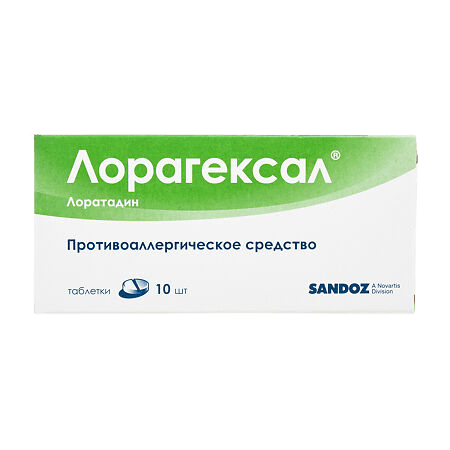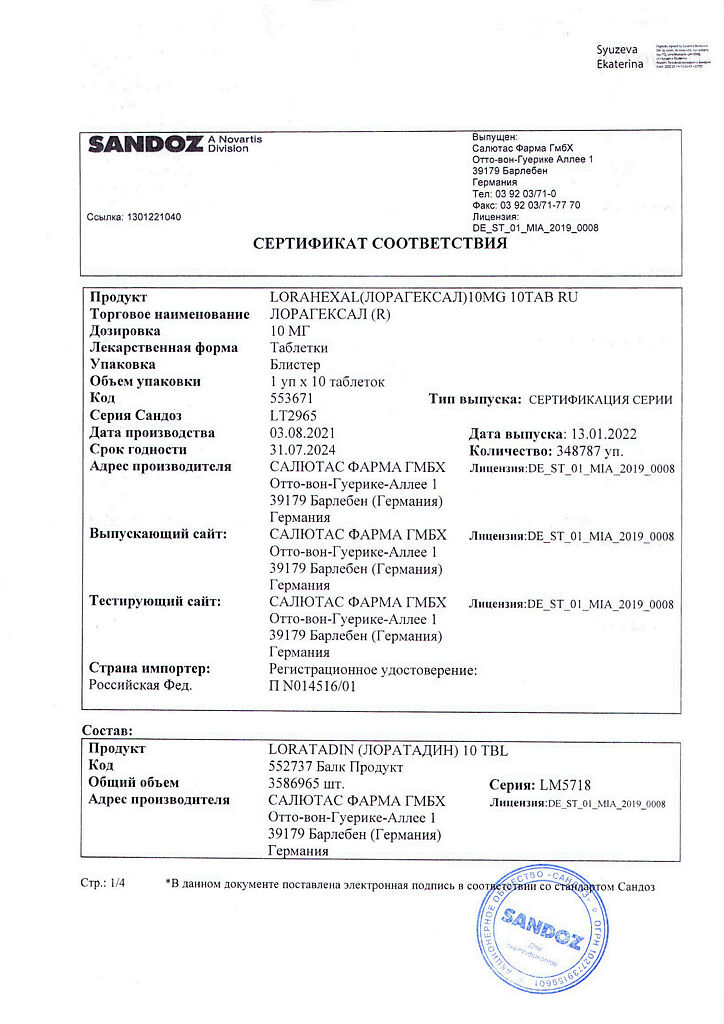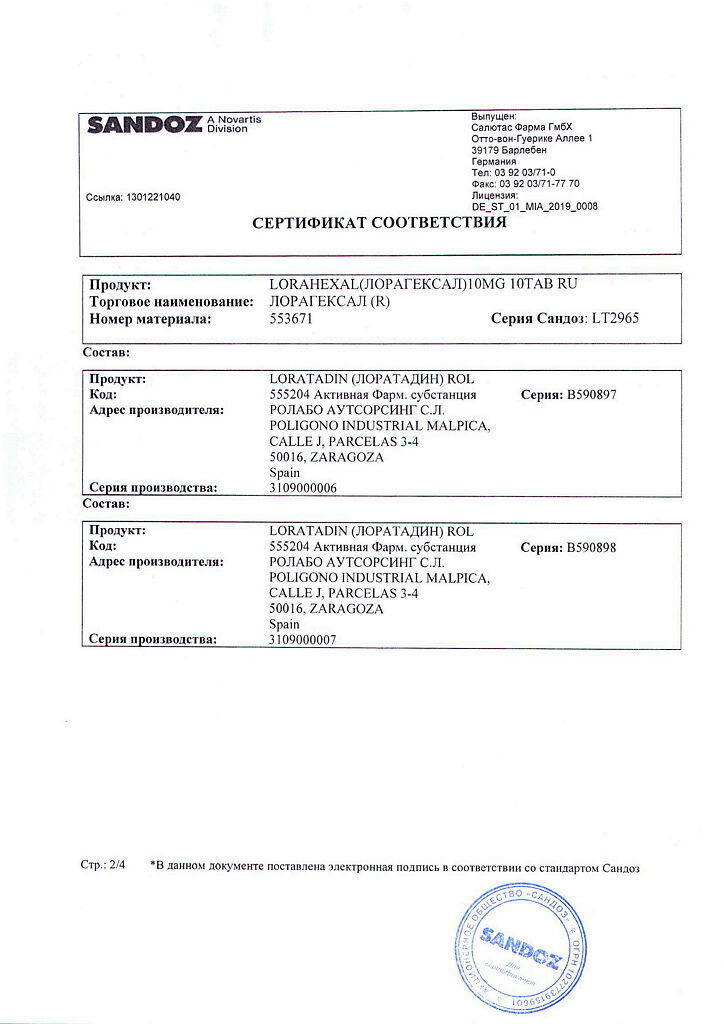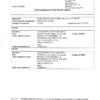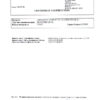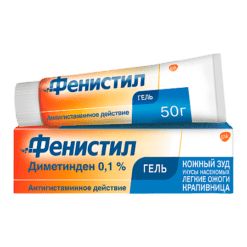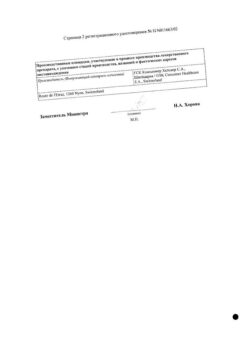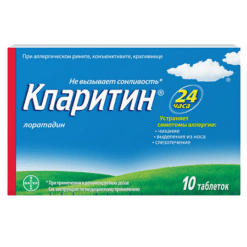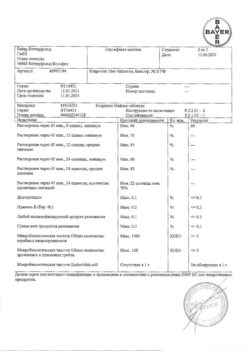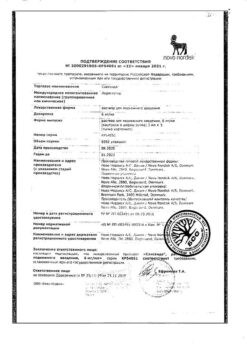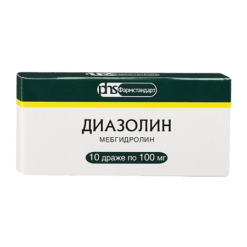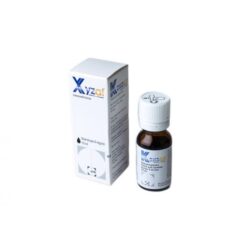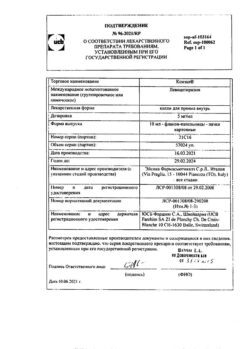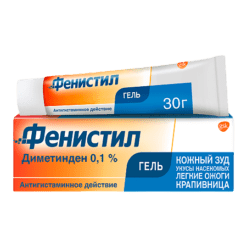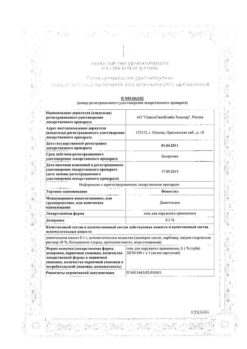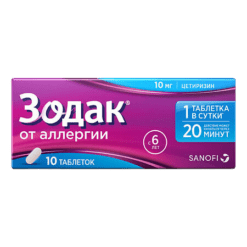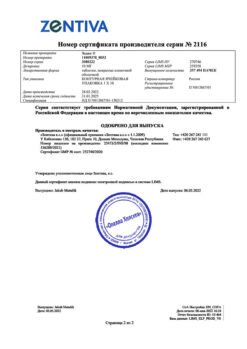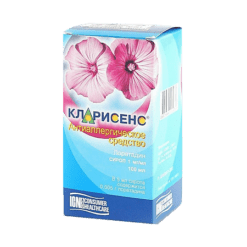No products in the cart.
Description
Loragesal (loratadine) is a H1-antihistamine drug with no central and anticholdinergic action.
When taken orally, the drug is well absorbed from the gastrointestinal tract. Absorption of the drug is not dependent on food intake.
The action of the drug starts 30 minutes after taking one tablet and lasts for 24 hours.
Loratadine is metabolized in the liver to form the active metabolite descarbotoxyloratadine.
The maximum concentrations of loratadine and its active metabolite in blood plasma are reached 1.3 – 2.5 hours after taking one tablet of Loragesal. Loragexal does not cause drowsiness and does not affect psychomotor functions, attention, performance, mental abilities.
Indications
Indications
For the treatment of seasonal and year-round rhinitis, conjunctivitis, hay fever, urticaria, Quincke’s edema, pseudoallergic reactions, itchy dermatoses, allergic reactions to insect bites.
Pharmacological effect
Pharmacological effect
Loragexal (loratadine) is an H1-antihistamine that does not have a central or antiholdinergic effect.
When taken orally, the drug is well absorbed from the gastrointestinal tract. Absorption of the drug does not depend on food intake.
The effect of the drug begins 30 minutes after taking one tablet and continues for 24 hours.
Loratadine is metabolized in the liver to form the active metabolite descarboethoxyloratadine.
Maximum concentrations of loratadine and its active metabolite in blood plasma are achieved 1.3 – 2.5 hours after taking one Loragexal tablet. Loragexal does not cause drowsiness and does not affect psychomotor functions, attention, performance, or mental abilities.
Special instructions
Special instructions
The drug should be stopped at least two days before allergy skin testing, as loratadine may affect their results.
There was no negative effect of loratadine on the ability to drive a car or perform other activities requiring increased concentration. However, in very rare cases, some patients experience drowsiness while taking Loragexal®, which may affect their ability to drive or operate machines.
Active ingredient
Active ingredient
Loratadine
Composition
Composition
Active ingredient:
loratadine 10 mg;
Excipients:
lactose monohydrate – 69.175 mg;
corn starch – 18 mg;
colloidal silicon dioxide anhydrous – 1.825 mg;
magnesium stearate – 1 mg
Pregnancy
Pregnancy
The safety of loratadine during pregnancy has not been established. The use of loratadine during pregnancy is possible only after consultation with a doctor if the expected benefit to the mother outweighs the potential risk to the fetus.
Breastfeeding period
Loratadine and its active metabolite are excreted into breast milk, therefore, when prescribing the drug during breastfeeding, the issue of stopping breastfeeding should be considered.
Contraindications
Contraindications
Hypersensitivity to any of the components of the drug.
Side Effects
Side Effects
Summary of drug safety study results
In clinical studies in adults and adolescents in a number of indications, including allergic rhinitis and chronic idiopathic urticaria, adverse events observed more often than with placebo (“dummy”) occurred in 2% of patients taking Loragexal® at the recommended dose of 10 mg per day. The following most common adverse events were observed more often than in the placebo group: drowsiness (1.2%), headache (0.6%), increased appetite (0.5%) and insomnia (0.1%). According to the World Health Organization (WHO), adverse reactions are classified according to their frequency as follows: very common (≥ 1/10), common (≥ 1/100, < 1/10), uncommon (≥ 1/1000, < 1/100), rare (≥ 1/10000, < 1/1000) and very rare (< 1/10000); frequency unknown - based on available data, it was not possible to determine the frequency of occurrence. In each group, the frequency of adverse reactions is presented in order of decreasing severity.
Immune system disorders are very rare:
hypersensitivity reactions (including angioedema and anaphylactic reactions).
Nervous system disorders are very rare:
dizziness, convulsions.
Cardiovascular system disorders are very rare:
tachycardia, rapid heartbeat.
Gastrointestinal disorders are very rare:
nausea, dry mouth, gastritis.
Disorders of the liver and biliary tract are very rare:
liver dysfunction.
Disorders of the skin and subcutaneous tissues are very rare:
allergic reactions (rash), alopecia.
General disorders and disorders at the injection site are very rare:
weakness.
Laboratory and instrumental data: frequency unknown: weight gain in children.
Pediatric patients
In clinical studies involving children aged 2 to 12 years, adverse events such as headache (2.7%), nervousness (2.3%) and fatigue (1%) were observed more often than with placebo (“dummy”). If any of the side effects indicated in the instructions get worse, or you notice any other side effects not listed in the instructions, tell your doctor.
Interaction
Interaction
Eating does not affect the effectiveness of the drug Loragexal®. The drug Loragexal® does not enhance the effect of alcohol on the central nervous system. When loratadine was co-administered with ketoconazole, erythromycin or cimetidine, an increase in the plasma concentration of loratadine was observed, but this increase was not clinically significant, including according to electrocardiography. Interaction studies with other drugs were conducted only in adult patients.
Overdose
Overdose
Symptoms: drowsiness, tachycardia, headache. In case of overdose, consult a doctor immediately.
Treatment: symptomatic and supportive therapy. It is possible to lavage the stomach, take adsorbents (crushed activated carbon with water). Loratadine is not excreted during hemodialysis. After emergency care is provided, it is necessary to continue monitoring the patient’s condition.
Storage conditions
Storage conditions
At a temperature not exceeding 25 °C.
Shelf life
Shelf life
3 years
Manufacturer
Manufacturer
Salutas Pharma GmbH, Germany
Additional information
| Shelf life | 3 years |
|---|---|
| Conditions of storage | At a temperature not exceeding 25 °C. |
| Manufacturer | Salutas Pharma GmbH, Germany |
| Medication form | pills |
| Brand | Salutas Pharma GmbH |
Related products
Buy Loragesal, tablets 10 mg 10 pcs with delivery to USA, UK, Europe and over 120 other countries.

